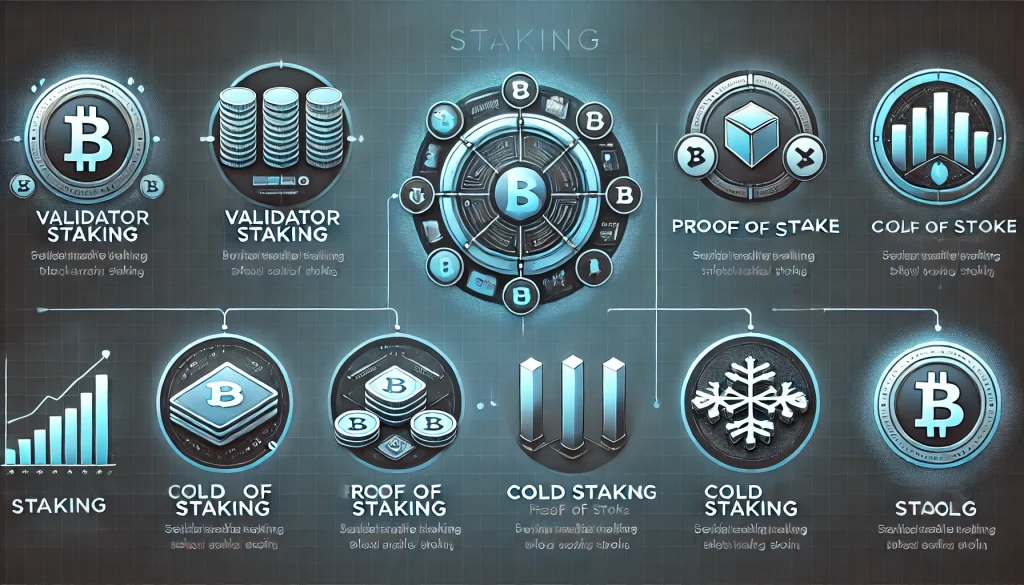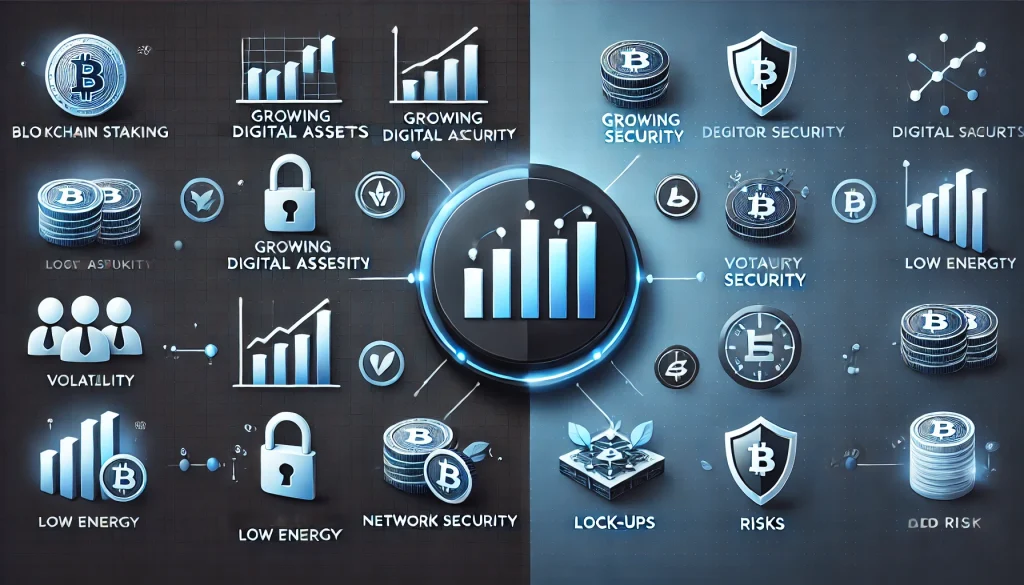
Crypto staking is a crucial concept in the cryptocurrency ecosystem, offering a way for investors to earn rewards by participating in the validation of transactions on a blockchain network. In today’s world, where digital assets are gaining significant traction, this has become a vital strategy for cryptocurrency enthusiasts, investors, and financial institutions. It plays a significant role in guiding decisions around policy-making, business strategies, and personal finance, especially as the decentralized finance (DeFi) space expands. Understanding this is essential for anyone involved in cryptocurrency planning, research, or investment.
What is Crypto Staking?
Crypto staking is the process of locking up a certain amount of cryptocurrency in a blockchain network to support its operations, such as validating transactions and securing the network. In return, participants, known as “stakers,” earn rewards, typically in the form of additional tokens. Staking is a fundamental component of Proof of Stake (PoS) and other consensus mechanisms that offer an alternative to the energy-intensive Proof of Work (PoW model. It encourages network participants to behave honestly and keep the network secure. Economically, this can be viewed as a way to earn passive income by holding onto digital assets. It involves elements like economic evaluation and risk assessment, as stakers need to consider the volatility of cryptocurrency prices, potential network failures, and lock-up periods. Staking is also known as crypto validation, yield farming, or staking rewards within the cryptocurrency community.

Key Features and Types of Crypto Staking
- Validator Staking: Participants lock up a minimum amount of cryptocurrency to become validators in the network. They are responsible for verifying transactions and maintaining network security.
- Delegated Proof of Stake (DPoS): Users delegate their staking power to trusted validators, who then validate transactions on their behalf, earning a share of the rewards.
- Cold Staking: Staking from a hardware wallet or offline device, offering security against hacks and theft but requiring assets to remain in cold storage.
- Staking Pools: Groups of stakers combine their resources to increase the chances of earning staking rewards. This is especially useful for small-scale investors.
These types provide various options based on user preferences for risk, return, and security.
History of Crypto Staking

Crypto staking emerged as a response to the challenges faced by the Proof of Work (PoW) consensus mechanism, such as high energy consumption and scalability issues. The concept was first introduced with Peercoin in 2012, which combined PoS with PoW. This laid the groundwork for the development of fully PoS-based networks. The rise of Ethereum 2.0, which began its transition from PoW to PoS in 2020, marked a significant milestone in staking, bringing it to the forefront of the cryptocurrency world. The subsequent adoption of PoS by other major networks, such as Cardano, Polkadot, and Solana, further cemented its relevance. Over time, staking evolved to include various models like DPoS and hybrid mechanisms, aimed at enhancing scalability, security, and decentralization. Here is a timeline of significant developments in crypto staking:
| Year | Development Milestone | Significance |
|---|---|---|
| 2012 | Introduction of Peercoin | First use of the Proof of Stake mechanism |
| 2017 | Launch of Cardano and Delegated Proof of Stake (DPoS) | Enhanced security and scalability for blockchains |
| 2020 | Ethereum 2.0 begins transition to Proof of Stake | Popularizes staking in mainstream blockchain technology |
| 2021+ | Rise of staking on platforms like Solana and Polkadot | Diversification and growth of staking opportunities |
Pros & Cons of Crypto Staking

| Pros | Cons |
|---|---|
| Potential for passive income through staking rewards | Risk of losing staked assets due to market volatility |
| Supports network security and decentralization | Lock-up periods can limit liquidity and access to funds |
| Lower energy consumption compared to mining | Vulnerability to network hacks and security breaches |
| Accessible to a wide range of participants, including small investors | Staking rewards may decrease as more participants join the network |
While staking provides opportunities for income and network participation, investors must carefully consider the risks and benefits involved.
Applications of Crypto Staking
Decentralized Finance
Staking is integral to DeFi platforms, allowing users to earn rewards and participate in governance. It supports the development of decentralized lending, borrowing, and yield farming services.
Corporate Strategy
Businesses are incorporating staking into their strategies to diversify revenue streams, enhance digital asset holdings, and engage with the blockchain community.
Personal Finance
For individual investors, this offers a way to earn passive income without trading or selling crypto assets. It appeals to those looking for long-term growth and portfolio diversification.
Government Policy
Some governments and regulators explore staking models to understand taxation, compliance, and regulatory frameworks for digital assets.
By supporting various use cases, it is a versatile tool in the expanding crypto economy.
Market Performance and Trends in Crypto Staking
Crypto staking has gained significant momentum in recent years, driven by the popularity of PoS networks and DeFi projects. As of 2023, the total value staked across all networks surpassed $150 billion, reflecting growing interest among investors. Major cryptocurrencies like Ethereum, Cardano, and Solana have contributed significantly to this growth. The staking market’s increasing volume and higher participation rates indicate a shift from traditional mining to more energy-efficient consensus mechanisms. However, market trends also show that staking rewards can fluctuate based on factors such as network congestion, inflation rates, and governance decisions. The perception of this within the broader crypto community is generally positive, as it offers a sustainable alternative to mining and aligns with the eco-friendly goals of many investors.
Insights into the Future of Crypto Staking

The future of crypto staking looks promising, with experts predicting further growth and innovation. According to Forbes, staking will play a crucial role in the evolution of blockchain technology, especially as more networks transition to PoS. Analysts from ZenLedger suggest that advancements in staking protocols could address current challenges like slashing risks and reward dilution. However, there are potential risks, including regulatory scrutiny and the possibility of technological flaws. The continued development of layer-2 solutions and cross-chain staking capabilities could offer more flexibility and security for users. Overall, the future of staking will likely involve more sophisticated tools and strategies, with increased focus on enhancing security, scalability, and user experience.
Conclusion
Crypto staking is a powerful tool in the cryptocurrency ecosystem, offering rewards, supporting network security, and promoting decentralization. This review has covered its key features, pros and cons, applications, and future outlook. While staking provides an appealing option for earning passive income, it comes with risks like market volatility and security concerns. Investors and stakeholders must carefully assess these factors to make informed decisions. For those interested in exploring more, consider reading specialized guides on staking strategies, regulatory frameworks, and technological advancements in blockchain networks.
FAQ
What is crypto staking, and how does it work?
Crypto staking involves locking up a certain amount of cryptocurrency in a blockchain network to help validate transactions and secure the network. In return, stakers earn rewards, often in the form of additional tokens, for their participation.
What are the risks and benefits of crypto staking?
The benefits of crypto staking include earning passive income and supporting network security. However, it comes with risks such as market volatility, potential loss of staked assets, and security vulnerabilities within the staking network.
Is crypto staking a good investment strategy?
Crypto staking can be a good investment strategy for those looking to earn passive income from their crypto holdings. However, it requires careful consideration of factors like lock-up periods, network reliability, and potential rewards versus risks.
Resources
- Britannica. What is Crypto Staking?
- Techopedia. Is Staking Crypto Safe?
- ZenLedger. How Staking is Influencing the Crypto Economy
- Forbes. Crypto Staking Basics
- The Motley Fool. 3 Things You Should Know Before Staking Crypto for Passive Income
